Dateline – October 15, 2013
When I go out looking for wildlife to photograph I generally prefer to start my hikes at the crack of dawn. Morning is one of the two times each day when wildlife is likely to be most active, and of the two it is probably the best. With a full day ahead of you, you have the luxury of time. When out in the field I enjoy letting my discoveries lead me where they will, and I use the extra time given by an early morning start to deviate from my original plans if I find something interesting enough to pursue.
Late afternoon walks are a different story. Evening hikes inherently limit your possibilities. Impending darkness demands a more disciplined approach. You have to keep careful track of where the sun is in the sky if you don’t want to be caught out in the field after dark. You have to control the urge to wonder what’s around the next bend, or what is over the next hill. With an afternoon hike there is not much room for improvisation.
On the plus side, dusk is a great time to see wildlife. Many animals wait for this transitional time between day and night before they become active. These animals prefer the cover of darkness but sometimes get an early enough start that the light is still adequate for pictures. Most of the time an early morning start is preferred when hoping to see wildlife, but every once in a while I will make it a point to take an afternoon hike.
As I have mentioned in an earlier post, when observing wildlife it pays to keep the sun at your back, and with this in mind an evening hike can open up a whole new set of possible places to explore. In the afternoon you will want to head east if possible. With the sun behind you and low in the western sky, its blinding glare can offer you some valuable concealment. The warm light of evening shining over your shoulders will also illuminate your subjects ideally for photography.
In mid-October I went for a rare late afternoon hike near Lewisville Lake. Here are a few of the things I saw.
The first thing of note I found was some Coyote scat—not my best start. In an older post I briefly discussed Coyote droppings and how they can reveal much about how the animal’s diet changes with the seasons: Coyote – Scatology.
In this case you can see that the Coyote had been feeding almost exclusively on Differential Grasshoppers which are so abundant in October. The droppings are packed full of grasshopper exoskeletons. The femurs are particularly noticeable. Just compare the chevron pattern on the digested bits with the legs of the live grasshopper perched atop the poop (does he see someone he recognizes?).
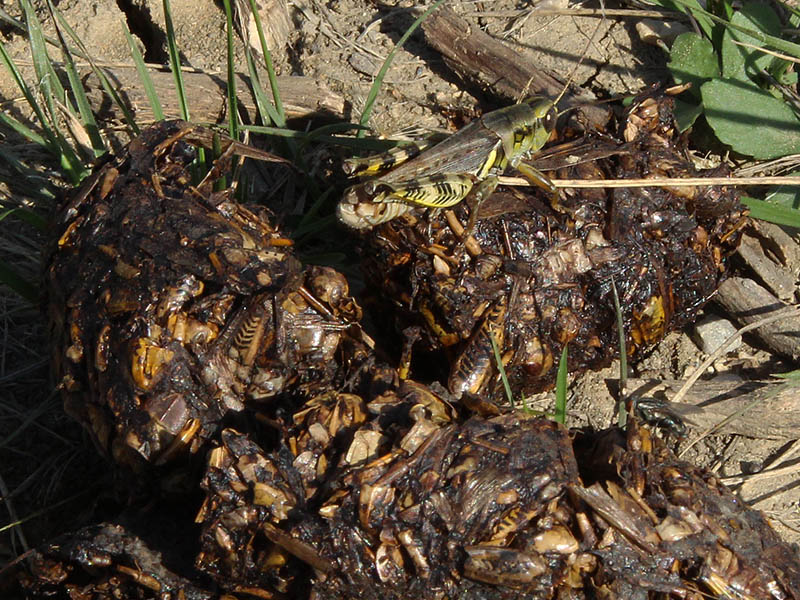
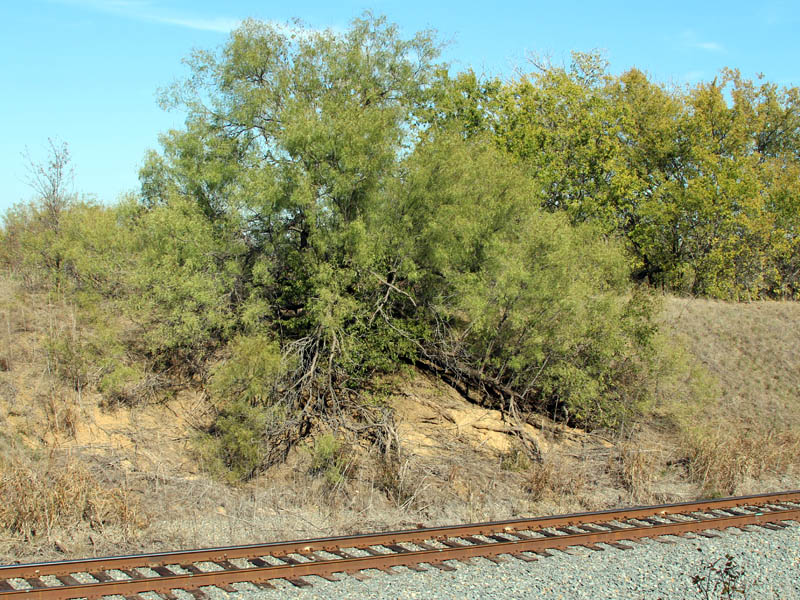
Just a little later I came across a Striped Skunk skeleton. Despite their formidable defenses, Striped Skunks do sometimes fall prey to some of our bolder carnivores, like Bobcats and Great Horned Owls. It is not clear what got the better of the skunk in the photograph below, but its bones were nearly denuded of soft tissue.

Looking to the sky I noticed the occasional Franklin’s Gull flying by high in the crystal clear cerulean skies of early autumn.

Sometimes I take pictures of high flying jet airliners if the urge strikes me. I often wonder what level of detail my camera will reveal at the lead-end of a flowing stream of contrails. This time it was a Boeing 747 from the looks of things.

While looking skyward for the previous picture, another unusual airplane caught my attention. This low flying propeller driven aircraft was strangely out of place—an anachronism. A World War Two era Consolidated B-24 Liberator—hero of the Ploiești bombing raid and many other battles—droned as it circled in its landing approach. A visitor to the Addison Airport and Cavanaugh Flight Museum in all likelihood.
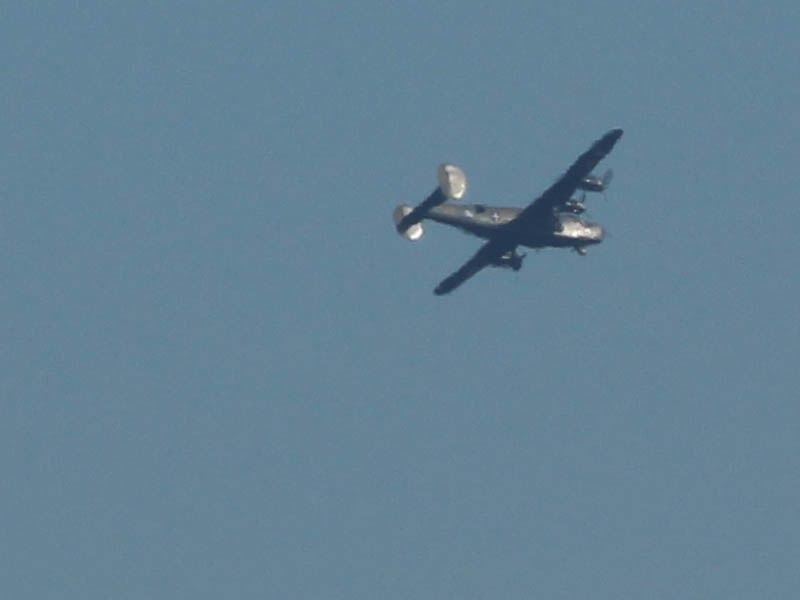
A little further on an I made another startling find—a car jutting out of the ground with only its suspension and a portion of the front tires exposed. There’s no telling how long the automobile had been there—probably decades. The car had likely been covered and uncovered repeatedly over the years with the coming and going of sedimentation carrying flash floods.
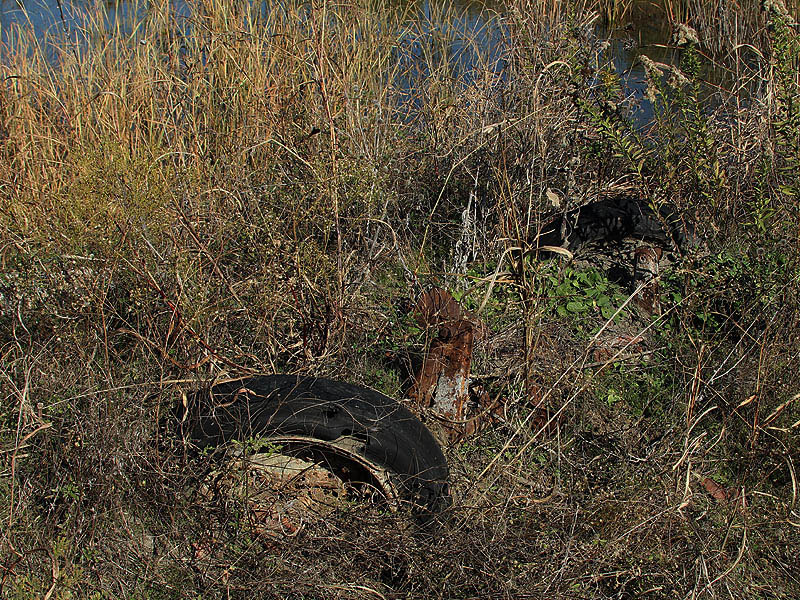
Nearby was a railroad trestle which I examined carefully. There was an unusual beauty to be found in the construction of these old tar-soaked timbers.

Below is a pellet that was found beneath the railroad trestle. Birds of prey regurgitate pellets in order to cast off the undigested parts of their food. This one contains the fur and bones of rats and mice from the looks of things. A hawk or owl likely uses the trestle as a nice place to survey its domain. The long open floodplain spanned by the bridge is the perfect place for a raptor to hunt.

The dragonfly below is known as a Variegated Meadowhawk. These fast flying insects were very active on this afternoon and I saw several of them. I will share more pictures and some video later in the week.

The creek at this location contains crystal clear water, and its soft silty base makes a perfect stamp pad for wandering animals to leave their tracks on. In the picture below Raccoon tracks are visible leading into and across this shallow pond. If you look carefully, you can see that they are crisscrossed by the trails of many other like-minded Raccoons in the middle of the stream.


A slightly gruesome find awaited me as I climbed the rise shown in the last photograph. Below is a picture of a Great Horned Owl carcass scattered along the hillside. Perhaps this is the same bird that produced the pellet presented earlier. I will share more pictures of this discovery later in the week as well.

I found this interesting plaque near the Lewisville Lake dam. The plaque was installed in 1952 as construction of the dam was coming to a conclusion. If you look closely at the plaque you can see that part of the inscription has been ground away. The removed words once read, “Garza Little Elm” which was the original name of Lewisville Lake. Garza was the name of a town on the west side of the lake and Little Elm is the name of a town on the east side of the lake. Garza is now known as the city of Lake Dallas, and the Garza Little Elm Reservoir has since been renamed Lewisville Lake.
This renaming of the reservoir—which took place in the mid-1970s— likely accounts for the ground down inscription on the dedication plaque. When the lake was renamed, an inscription reading “Lewisville Lake” was likely bolted on over the Garza Little Elm text. Grinding the old letters down was probably necessary for a good fit. Since then the new appliqué has apparently been pried off and stolen.

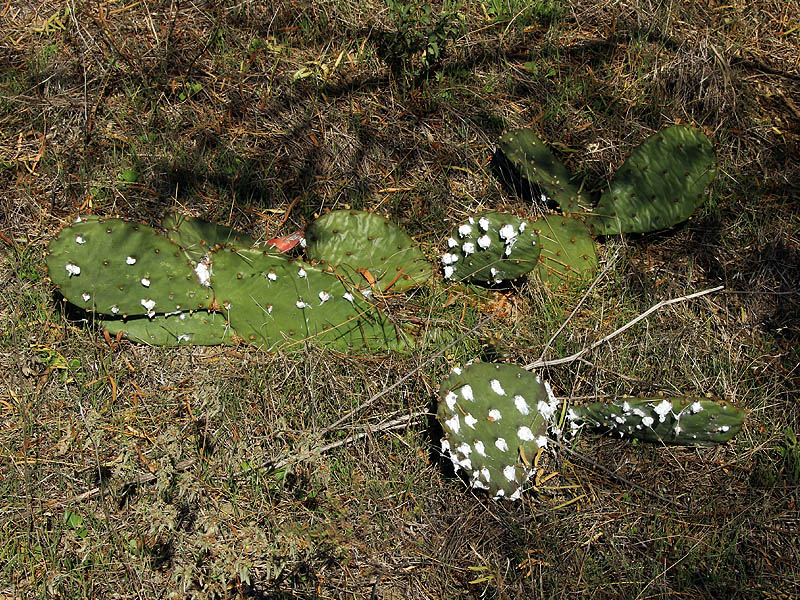
Birds of prey were out in droves on this afternoon. Mostly Red-tailed Hawks searching for prey, but I also caught a glimpse of a Cooper’s Hawk and my first Northern Harrier of the season.

Nearing the lake, I stopped for a moment to have a look at the mudflats exposed as the lake water retreated in our extended drought. I was glad I did. While I watched one of the nicest looking bucks I have ever seen crossed the field starting on the far side and running in my direction.
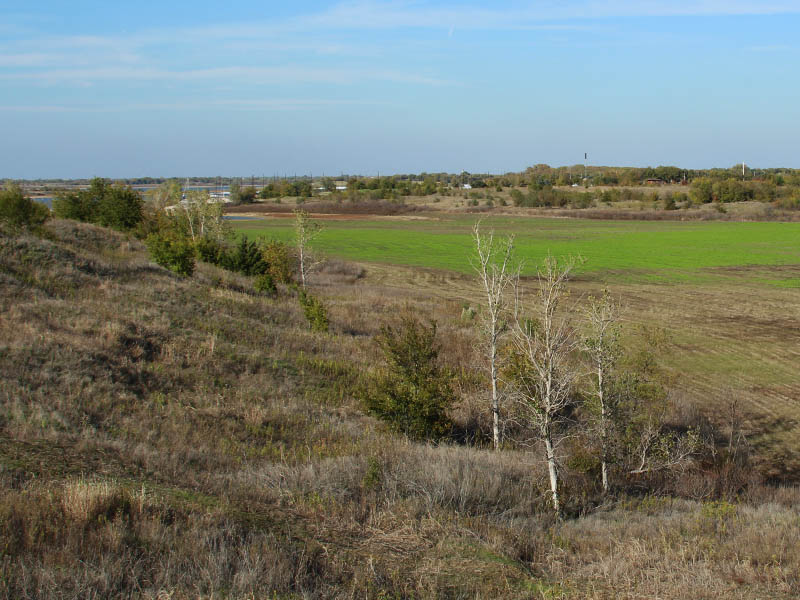
Just look at this guy with his big barreled chest, thick neck, and narrow waist. That is one good looking whitetail! I will be sharing more pictures of him later in the week too.

As I headed back toward the car, Turkey Vultures began coming to the dam in droves to roost for the night. Vulture after vulture flew by—many at low altitude—allowing a number of excellent opportunities for photographs!








Hey Chris,
Long time no see. Just wanted to point out one thing on your picture of the cacti. Those are not mealybugs. They are cochineal. A small scale like insect from which bright red/scarlet dye is derived and has been used for hundreds of years. As one example the color of the British red coats. On a more modern note they are used for food coloring in some all natural type foods. Snapple drinks for example include them in several of their drinks as you can read on the label.
Next time you see them in the field pull one off and squeeze it and you will see just how bright red the dye is.
Hope to see you around.
Hey Brent,
Nice to hear from you! Thanks for getting me straight on this!
-Chris